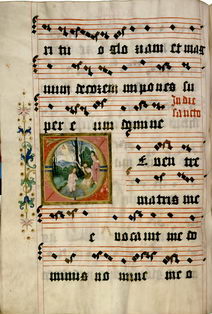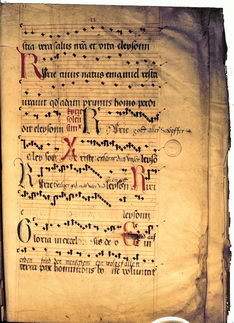The Mass
The Mass, with the Divine Office, forms the main liturgical frame of Gregorian chant and a decisive area of Gregorian research. Its structure is simpler than that of the Office, which has several differently structured hours based on longer or shorter series of repeated chant genres. Apart from non-standard liturgies (such as Easter), the musical material of the Mass consists only of a few pieces, though are more distinctive in musical character than those of the Office. This probably ties in with the fact that the sung repertory of the Mass is spatially and temporally more uniform than that of the Office.
But that only holds when seen from afar. Viewed more closely, the Mass too shows differences of dioceses and local practices, which can be observed even between sources from the same tradition. In general the differences between Mass repertories are not primarily structural (as with the Office), but to do with melodic variations. Furthermore, the variations and growth of the repertory are more significant in certain genres (e. g. in Alleluias, sequences, and ordinary chants). A full picture can be obtained from the experiences of structural and melodic comparison. For that reason, research into the Mass in the Department of Early Music takes two directions:
- Comparison of the repertory of sources and traditions takes place within the Gradualia project.
- Comparative examination of the chants and melodic variants has rested on the corpus of the Mass Propers and Mass Ordinaries (collections of proper and ordinary melodies of the Gradual).









